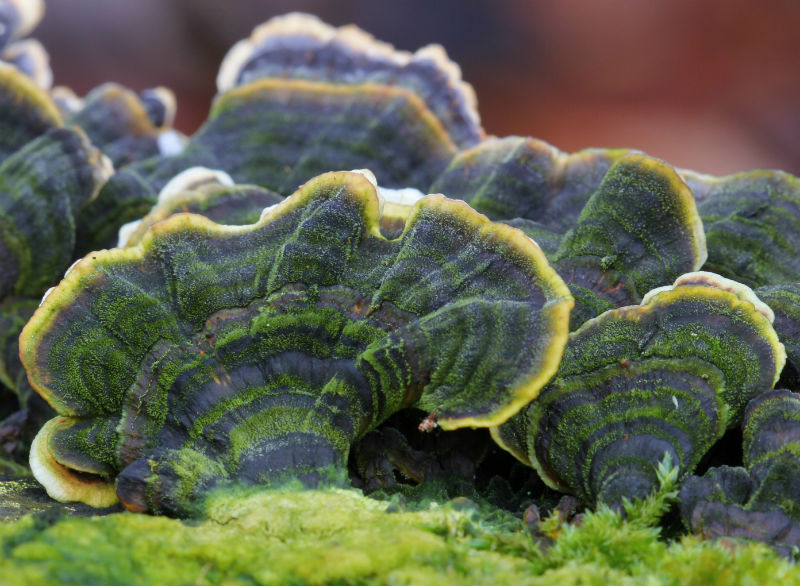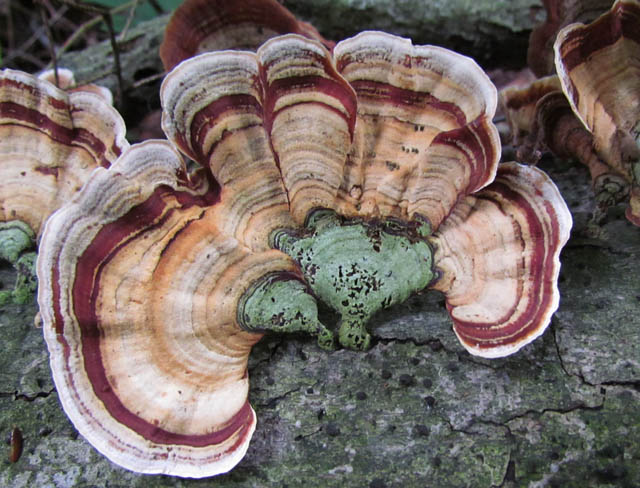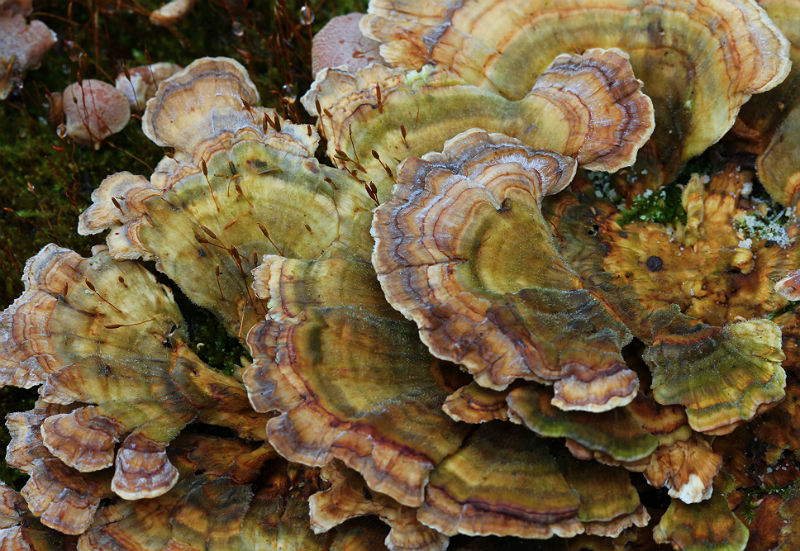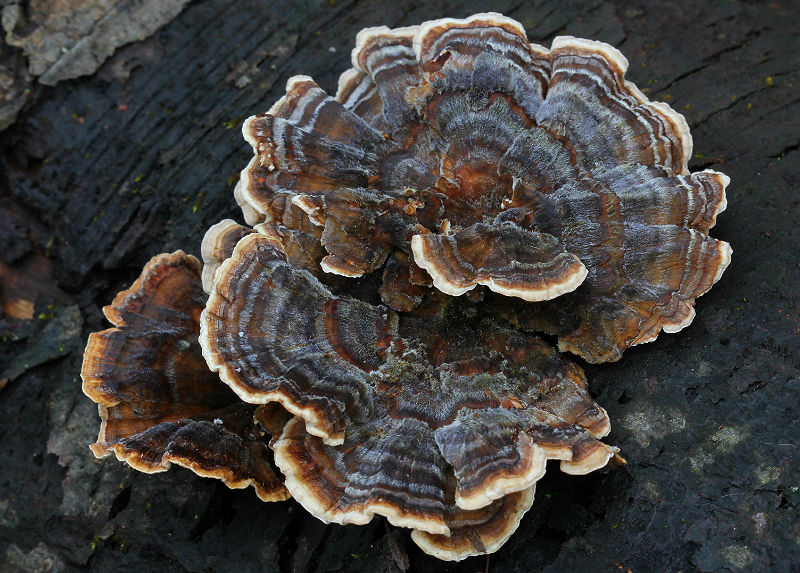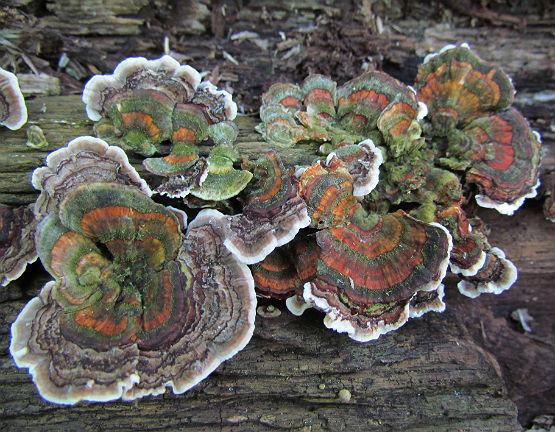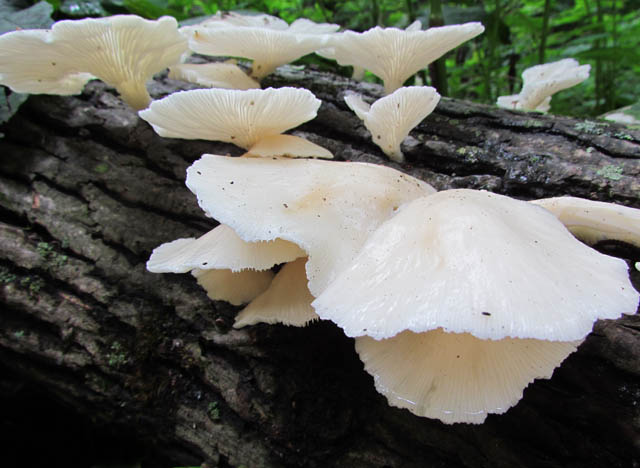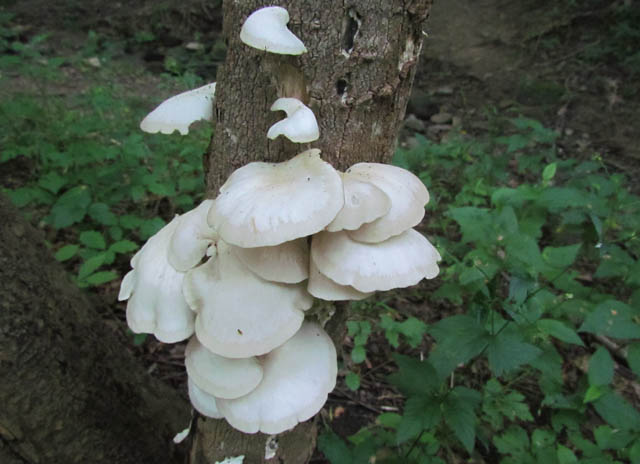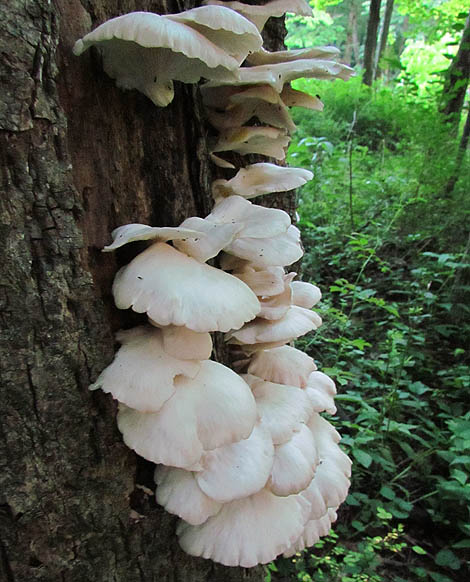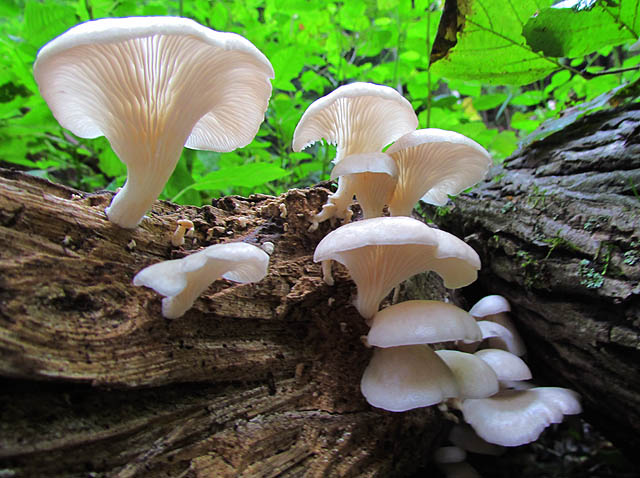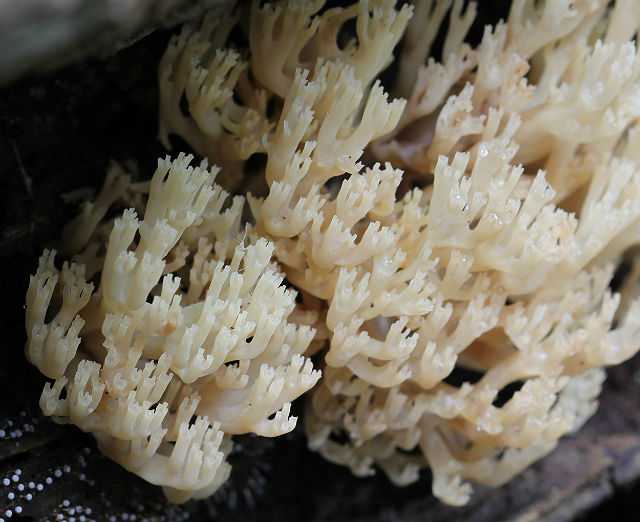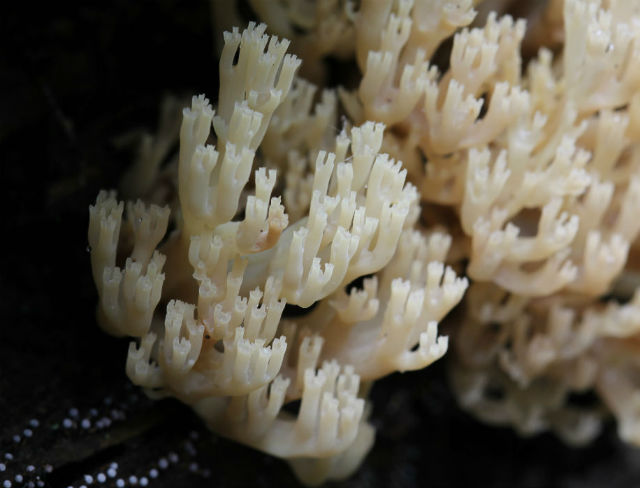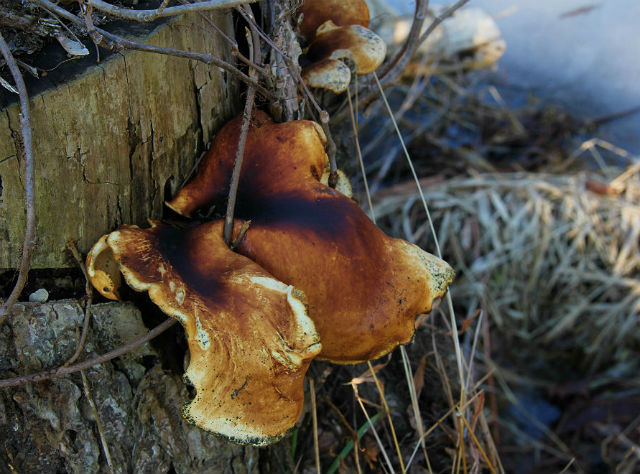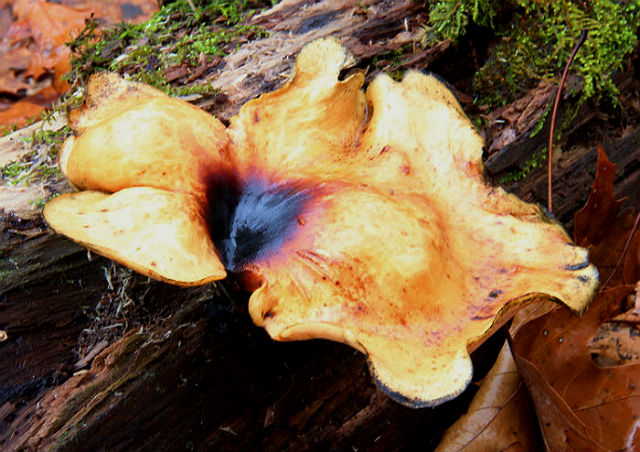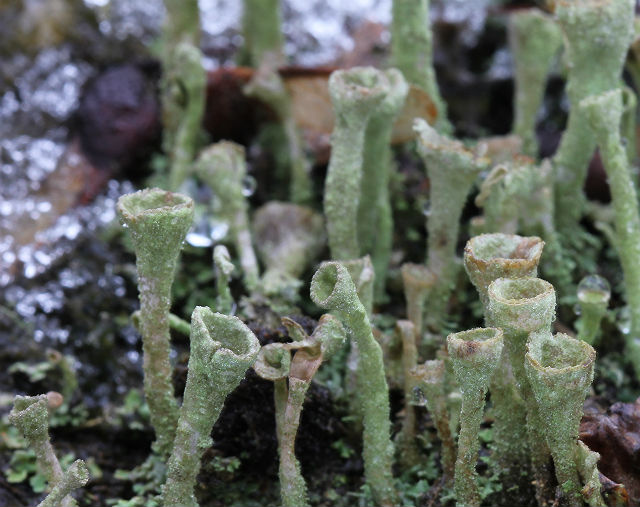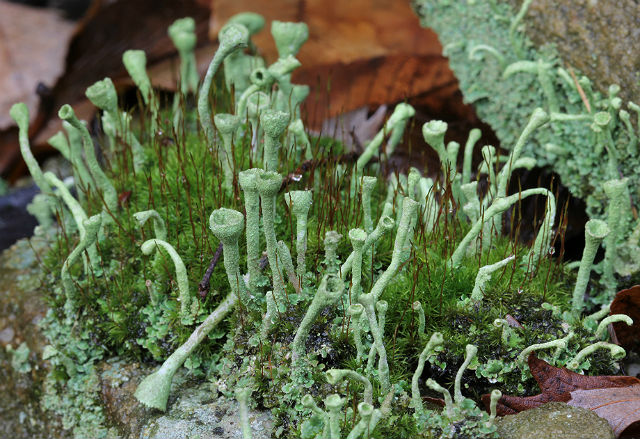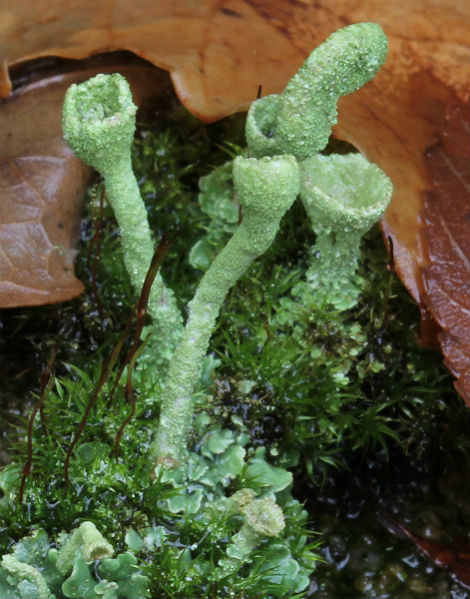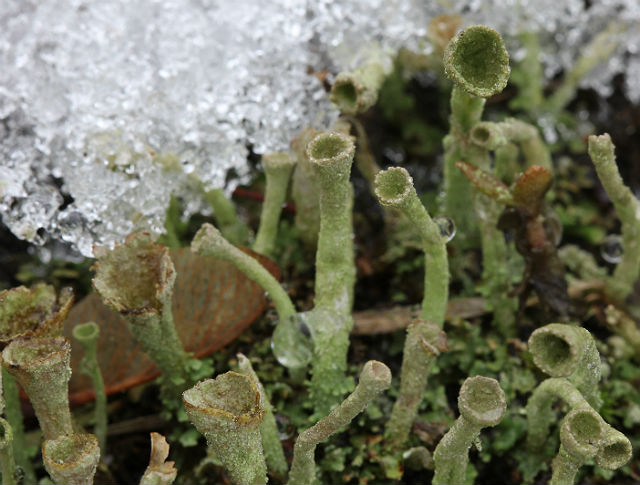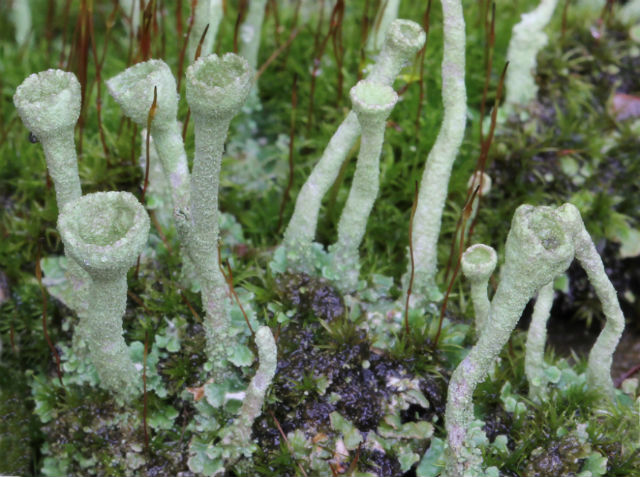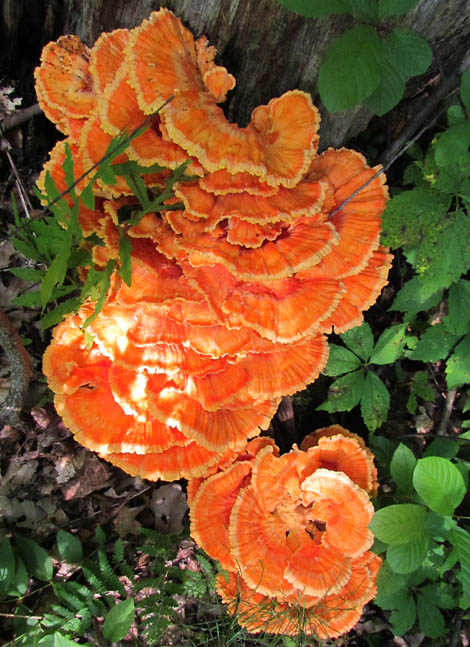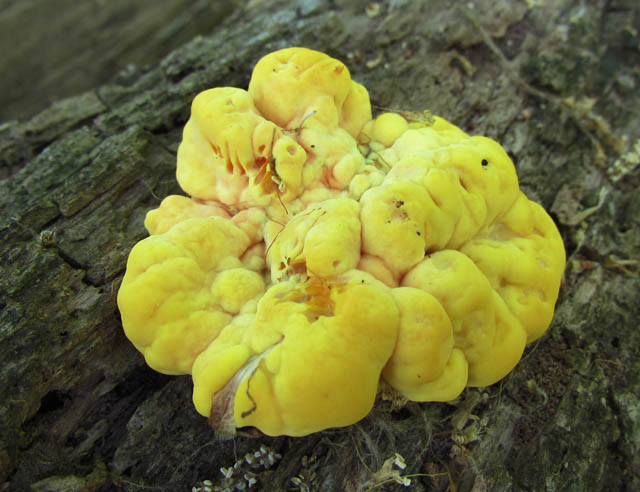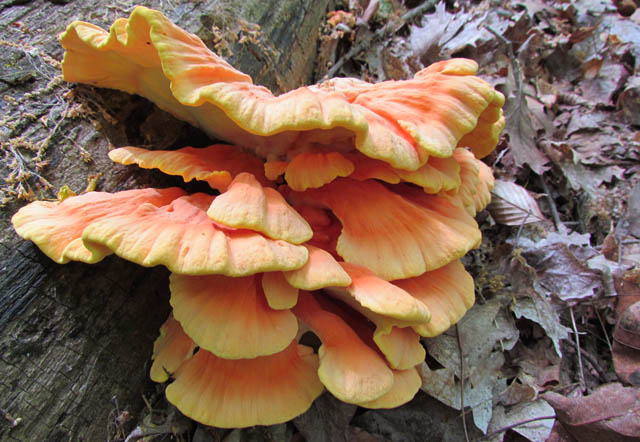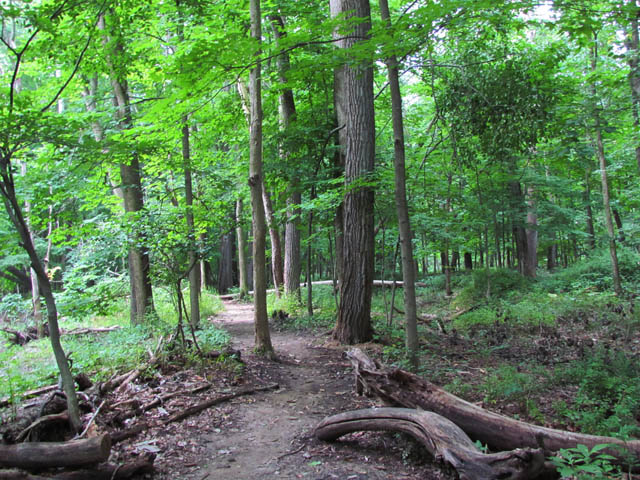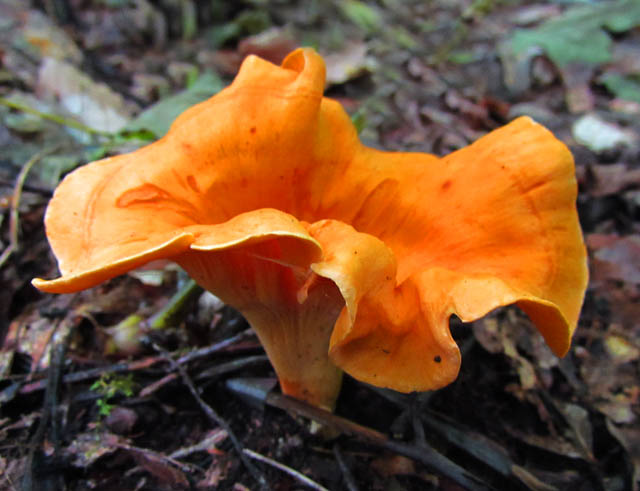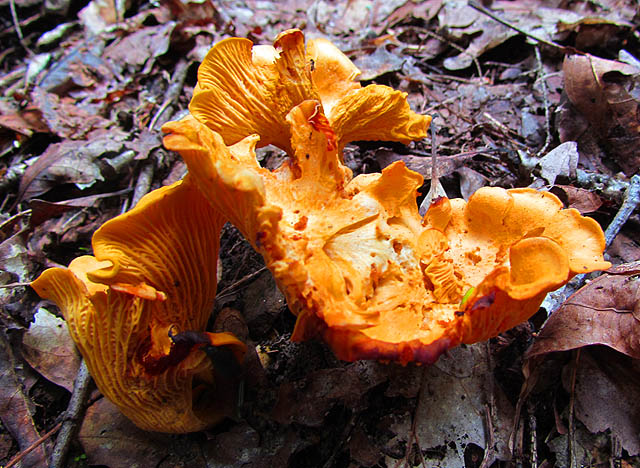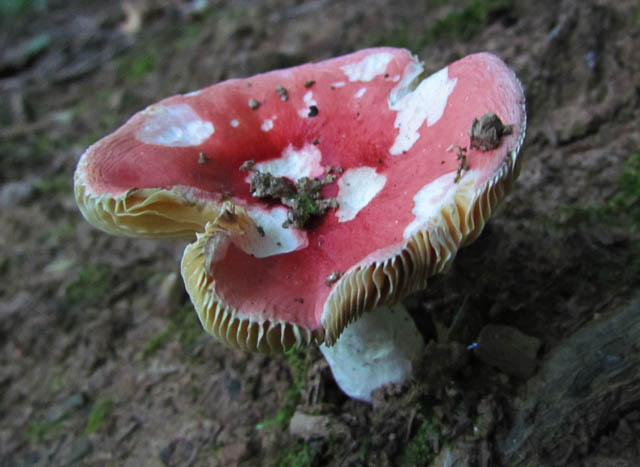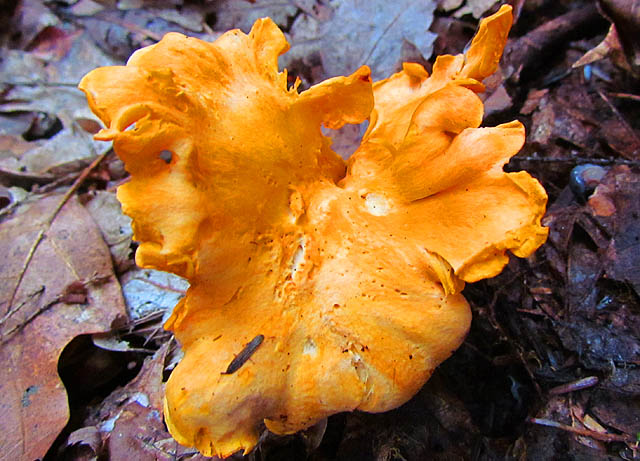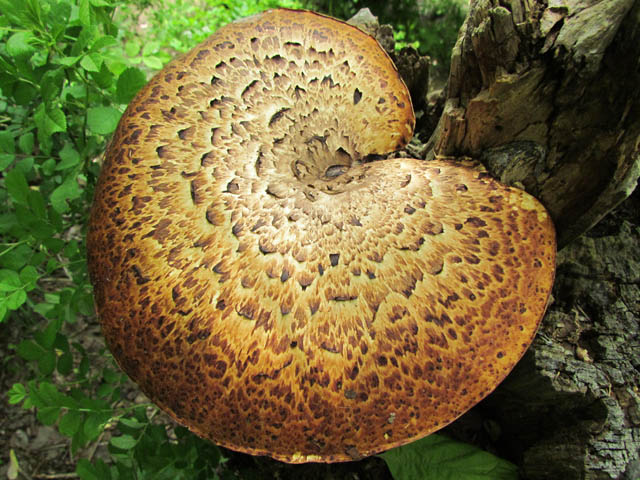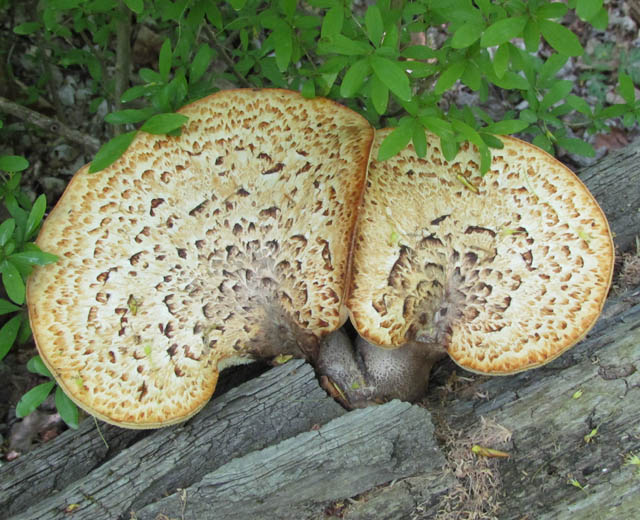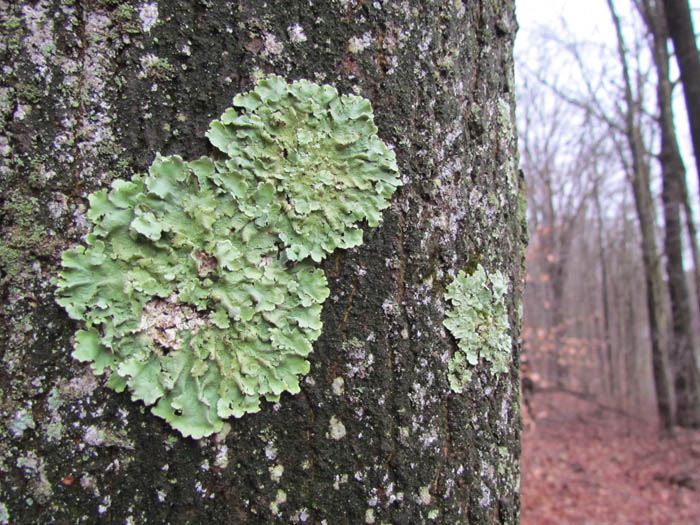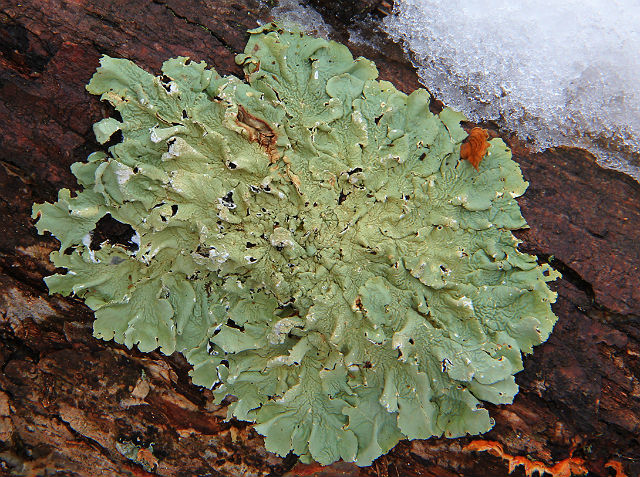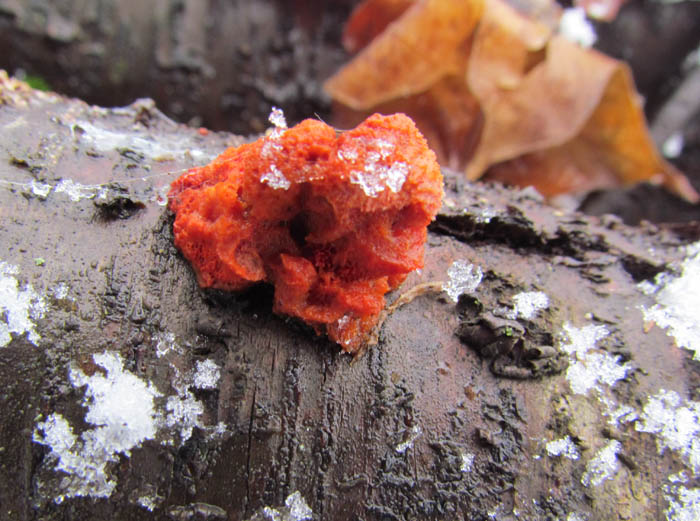Turkey Tail is a bracket fungus which grows on the sides of logs or trees. It’s easy to see how it gets its common name. The fan-shaped fruiting bodies have the same kind of concentric banding and roughly the same palette of colors as an actual Wild Turkey’s tail.
Fungi are recyclers. By digesting dead organic matter, they release carbon bound in plant cells. To do this they secrete digestive enzymes to chemically break down food into a form that they can absorb. Eventually, due to this process, nutrients are returned to the soil to be used again.
Turkey Tail is spoon-shaped, up to four inches wide, and can be very colorful. Its colors can range from brown, white, tan, orange, red, or purple – or all of these colors at once. They often overlap each other and feel leathery to the touch.
Like other fungi, Turkey Tail is the name for the part that you see. Most of the fungus is inside the bark of the log. The “tail” that you see is like the “flower” of the fungus.
Turkey Tails are among the most common and most beautiful fungi in the woods and on a dreary November day, finding and photographing them can make for an enjoyable way to spend the afternoon.

